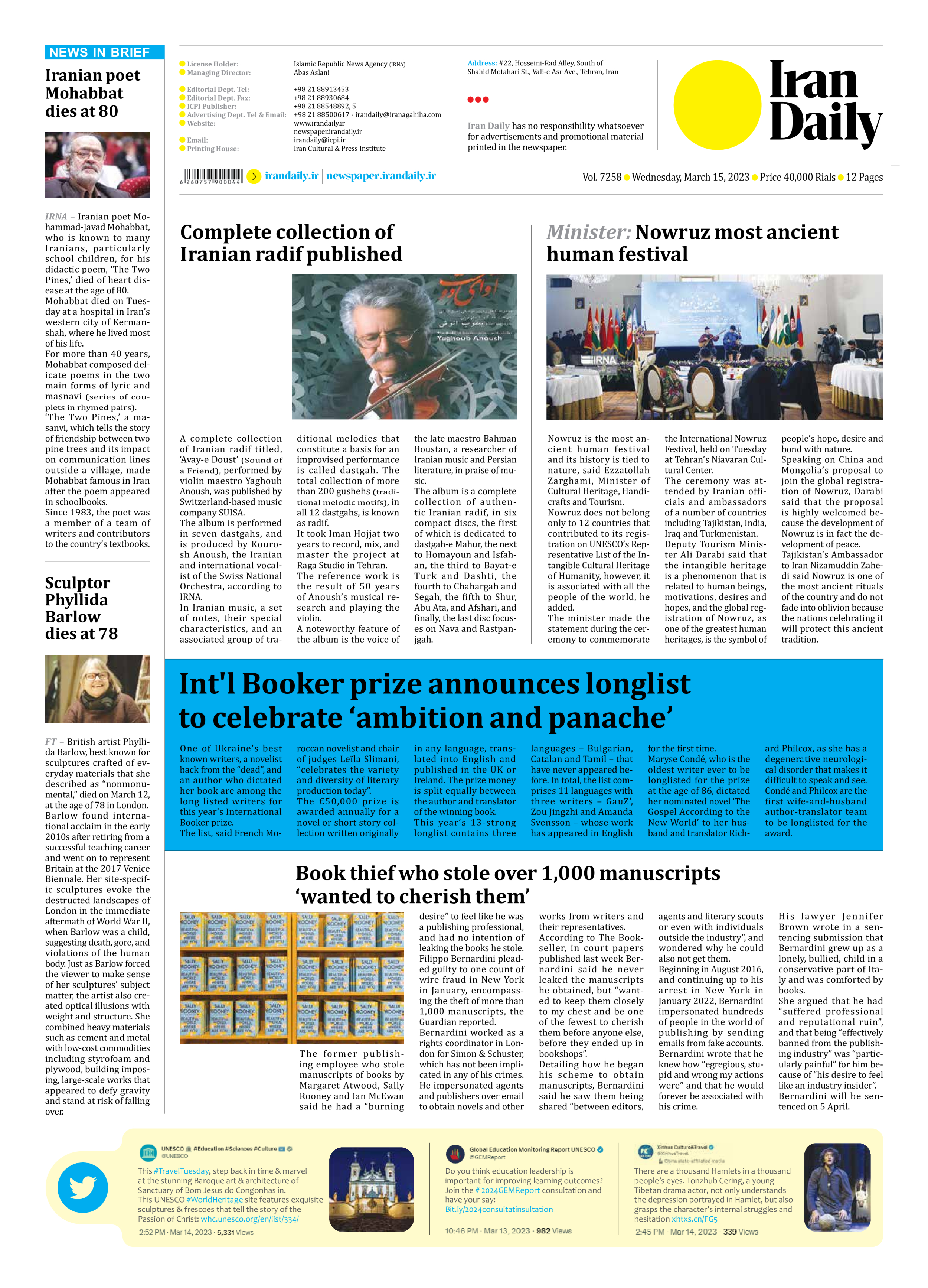
Complete collection of Iranian radif published
A complete collection of Iranian radif titled, ‘Avay-e Doust’ (Sound of a Friend), performed by violin maestro Yaghoub Anoush, was published by Switzerland-based music company SUISA.
The album is performed in seven dastgahs, and is produced by Kourosh Anoush, the Iranian and international vocalist of the Swiss National Orchestra, according to IRNA.
In Iranian music, a set of notes, their special characteristics, and an associated group of traditional melodies that constitute a basis for an improvised performance is called dastgah. The total collection of more than 200 gushehs (traditional melodic motifs), in all 12 dastgahs, is known as radif.
It took Iman Hojjat two years to record, mix, and master the project at Raga Studio in Tehran.
The reference work is the result of 50 years of Anoush’s musical research and playing the violin.
A noteworthy feature of the album is the voice of the late maestro Bahman Boustan, a researcher of Iranian music and Persian literature, in praise of music.
The album is a complete collection of authentic Iranian radif, in six compact discs, the first of which is dedicated to dastgah-e Mahur, the next to Homayoun and Isfahan, the third to Bayat-e Turk and Dashti, the fourth to Chahargah and Segah, the fifth to Shur, Abu Ata, and Afshari, and finally, the last disc focuses on Nava and Rastpanjgah.







